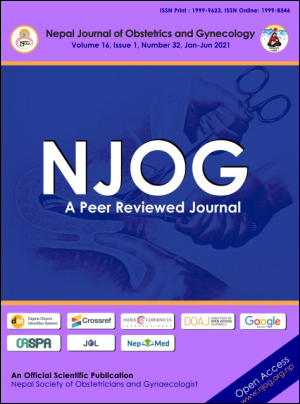Peripartum hysterectomy at a tertiary center
Keywords:
abnormal placentation, cesarean section, peripartum hysterectomyAbstract
Aims: To find out the incidence, indications, complication of emergency peripartum hysterectomy in a tertiary care center.
Methods: This was a retrospective study conducted over a period of 18 months from April 2017 to October 2018 at Paropakar Maternity and Women’s Hospital in Kathmandu. Data were obtained from the operation theater register and record section.
Results: Out of 30917 deliveries in 18 months 18 had lifesaving emergency peripartum hysterectomy (0.58 per 1000 deliveries). The most common indication being morbidly adherent placenta/placenta previa (8; 44%) followed by ruptured uterus (5; 28%), uterine atony (4; 22%). The most common risk factor is attributed to previous cesarean section (11; 61%) followed by abnormal placentation (7; 39%). Most common morbidity was febrile morbidity followed by wound infection and bladder injury.
Conclusion: Abnormal placentation and past cesarean section contributed to be the major indication of peripartum hysterectomy.
Downloads
Downloads
Published
How to Cite
Issue
Section
License
Copyright (c) 2021 Monica Gurung, Gehanath Baral

This work is licensed under a Creative Commons Attribution-NonCommercial 4.0 International License.
Copyright on any research article in the Nepal Journal of Obstetrics and Gynaecology is retained by the author(s).
The authors grant the Nepal Journal of Obstetrics and Gynaecology a license to publish the article and identify itself as the original publisher.
Articles in the Nepal Journal of Obstetrics and Gynaecology are Open Access articles published under the Creative Commons CC BY-NC License (https://creativecommons.org/licenses/by-nc/4.0/)
This license permits use, distribution and reproduction in any medium, provided the original work is properly cited, and it is not used for commercial purposes.



